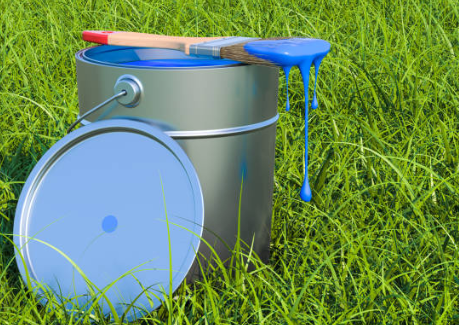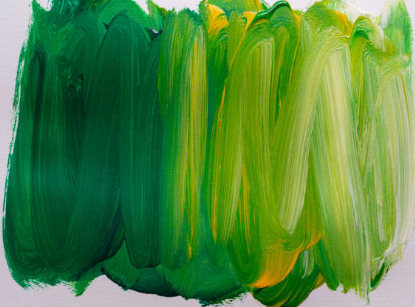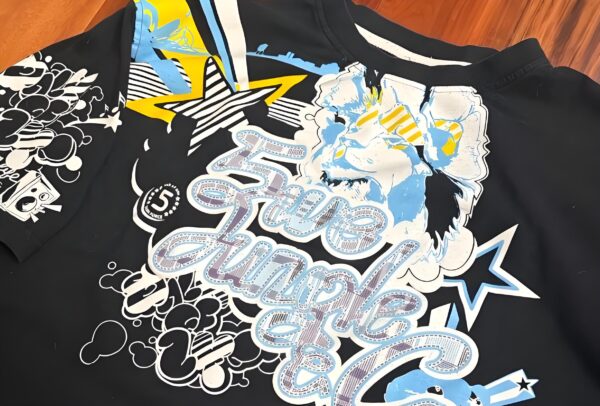Table of Contents
The Environmental Impact of Silk Screen Ink: Eco-Friendly Options
Did you know most screen printing inks can hurt the Earth? This article explains eco-friendly inks that are safer for our planet.

Why Some Inks Are Bad for the Environment
Traditional inks (like plastisol) have harmful chemicals, especially those found in acrylic screen printing ink. Here’s why they are bad:
1. Toxic Ingredients
- PVC (a type of plastic) and heavy metals (like lead) can poison soil and water.
- 60% of printers Many printers still use these dangerous inks (Source: ZDHC Survey 2023), even when options like permaprint premium are available.
2. Air and Water Pollution
- VOC emissions (harmful gases) are released when inks dry. Regular inks make 70-80% of these gases.
- Washing screens sends toxic wastewater into rivers.
3. Landfill Waste
- Old ink and containers go to landfills. PVC does not break down for 100+ years.
7 Eco-Friendly Inks That Help the Earth
Here are safe inks you can use instead:
1. Water-Based Inks
- Why It’s Good: No PVC, low VOC emissions, safe for water.
- Example: Oeko-Tex Certified Inks.
2. Soy-Based Inks
- Why It’s Good: Made from plants, easy to clean.
- Example: Soy Ink Council Brands.
3. UV-Curable Inks
- Why It’s Good: Dry fast with light, use less energy, making it ideal for polyester fabrics.
- Example: SolarScreen UV Inks, ideal for creating vibrant colors on fabric.
4. Recycled Inks
- Why It’s Good: Made from old ink, less waste, particularly in fabric screen printing.
- Example: Eco Ink Company.
5. Discharge Inks
- Why It’s Good: Bleach-free, soft on fabric.
- Example: GreenGenius Discharge.
6. Biodegradable Inks
- Why It’s Good: Breaks down naturally, no plastic.
- Example: EarthSafe Bio-Ink, a sustainable option for fabric screen printing.
7. Hemp Inks
- Why It’s Good: Made from hemp plants, carbon-negative.
- Example: HempPrint Pro.
Fun Fact: Using soy-based inks, a safer alternative to traditional inks in fabric screen printing. can cut CO2 emissions by 25% (Soy Ink Council 2023).

How to Switch to Eco-Friendly Inks
Step 1: Look for Certifications
- GOTS: Safe for organic fabrics.
- Oeko-Tex: No 300+ harmful chemicals.
- Blue Angel: Good for air and water.
Step 2: Save Money
- UV inks use 50% less energy (Screen Printing Magazine 2024).
- Avoid fines from breaking REACH Regulation (bans 12 bad chemicals, including harmful substances found in plastisol ink).
Step 3: Follow Easy Tips
- Recycle screens and ink containers, especially those used for fluorescent inks.
- Use water-based cleaners to wash tools.
- Work with Eco-conscious suppliers are increasingly offering environmentally friendly options for screen printing..
Success Stories
1. Patagonia’s Green Change
- Switched to water-based inks.
- Cut carbon footprint by 40% (Patagonia Report 2023).
2. California Print Shop
- Used in various applications, including speedball techniques for fabric screen printing. biodegradable inks.
- Achieved zero landfill waste.
3. The Green Ink Company
- Made ink from algae.
- Reduced surface impact on the environment by using environmentally friendly practices. wastewater by 90% (CE100 Report 2024).

FAQs
Are eco-friendly inks as strong as regular inks?
Yes! UV-curable inks are often used in modern silk screen printing processes. and soy-based inks last long.
Do water-based inks work on dark shirts?
Yes, but use a white base layer first.
How to throw away eco-ink safely?
Check labels. Most can go in compost or recycling.
What You Can Do Today
Share this article to help others go green!
Remember: Every eco-ink swap helps protect our planet! 🌍









